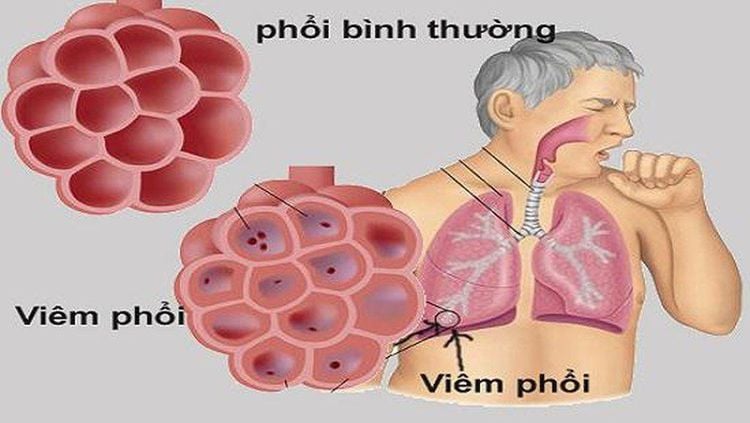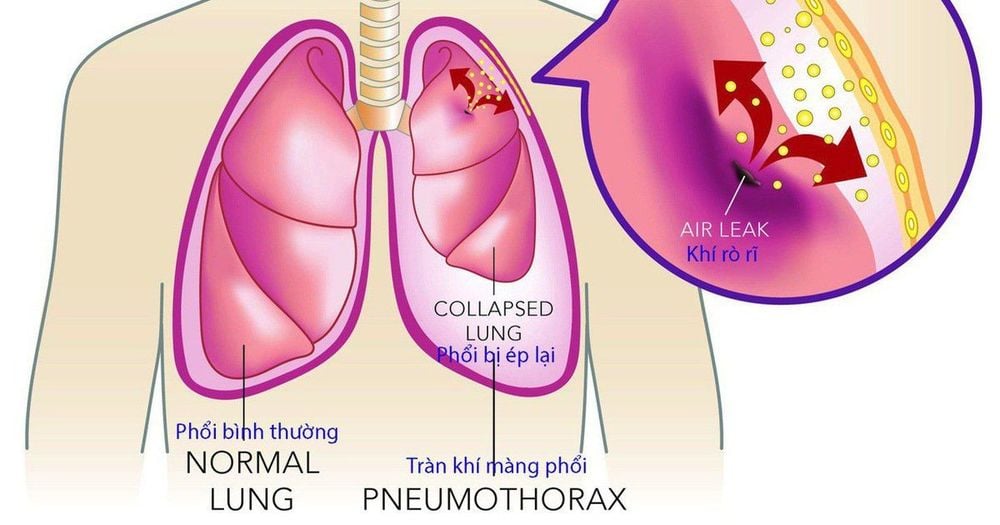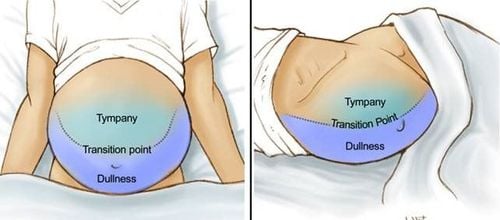This is an automatically translated article.
Lung diseases are among the most common diseases in the world. Smoking, infections and genetic mutations are the main causes of lung diseases.1. Lung diseases affecting the respiratory tract
The trachea is divided into bronchial tubes and in turn branch to become small tubes in the lungs. Conditions that affect the airways include:
Asthma: long-term inflammation of the airways and can sometimes constrict, causing wheezing and difficulty breathing. Chronic Obstructive Pulmonary Disease (COPD): lung diseases that can make breathing difficult due to narrowing of the airways. Chronic bronchitis: a type of chronic obstructive pulmonary disease with persistent cough with sputum. Emphysema: a type of chronic obstructive pulmonary disease that causes the lungs to become over-inflated. The patient will have difficulty in exhaling. Acute bronchitis: A sudden infection of the respiratory tract, usually caused by a virus. Cystic fibrosis: An inherited disease that slows down the removal of mucus from the bronchi. The accumulation of mucus causes repeated lung infections. The airways are gradually separated into small tubes (bronchioles) and finally a group of air sacs called alveoli. These air sacs are the main components of lung tissue. Lung diseases affecting the alveoli include:
Pneumonia: damage to the lung tissue caused by inflammation of the alveoli, often due to bacterial infection.

Viêm phổi: tổn thương tổ chức phổi do tình trạng viêm nhiễm phế nang, thường do nhiễm khuẩn
Tuberculosis: a slowly progressive pneumonia caused by the bacterium Mycobacterium tuberculosis. Emphysema is caused by damage to the connections between the alveoli. The cause of this disease is usually smoking (emphysema, which restricts airflow, affecting the airways). Pulmonary edema: fluid leaks from small blood vessels in the lungs into the alveoli and surrounding areas. Pulmonary edema can be caused by heart failure or by direct damage to the lungs. There are many types of lung cancer and can develop in any part of the lung. Most cancers start in the main part of the lung in or near the alveoli. The type of cancer, location, and metastasis in the lung will determine treatment plans. Acute respiratory distress syndrome: caused by sudden and severe damage to the lungs due to serious illness. Life support with mechanical ventilation is often needed until the lungs recover. Pneumonia: a group of diseases caused by inhaling substances harmful to the lungs. “Black lung disease” is an example of pneumoconiosis caused by inhaling coal dust and asbestos.
2. Lung diseases affecting the interstitium
The interstitium is the thin membrane between the alveoli. Small blood vessels pass through the interstitium of the lungs and facilitate gas exchange between the alveoli and the blood. Several lung diseases affect the interstitium:
Interstitial lung disease: a group of diseases affecting the interstitium of the lungs. Granulomatosis, idiopathic pulmonary fibrosis, and autoimmune disease are among the many types of interstitial lung diseases. Other types of pneumonia and pulmonary edema can also affect the interstitium of the lungs.
3. Lung diseases affecting blood vessels
The right atrium of the heart receives blood with low oxygen from the veins and the right ventricle contracts blood to the lungs through the pulmonary artery. These blood vessels can also be affected by the disease.
Pulmonary embolism: a blood clot (usually in a deep vein) that travels to the heart and is then contracted to the point of death. Thrombosis often blocks the pulmonary artery and causes shortness of breath and hypoxia. Pulmonary hypertension: Many diseases can lead to an increase in blood pressure in the pulmonary arteries. This disease can cause shortness of breath and pain in the chest. When no cause can be identified, the disease is considered primary pulmonary hypertension.
4. Lung diseases affecting the pleura
The pleura is the serosa that surrounds the lungs and lines the inside of the ribcage. A small amount of fluid allows the pleura to slide through the lungs with each breath. Pleural diseases include:
Các bệnh về phổi ảnh hưởng đến màng phổi
5. Lung diseases affecting the ribcage
The ribcage also plays an important role in breathing. The muscles connect the rib cage and help the ribcage expand. The diaphragm descends with each breath and also contributes to the expansion of the ribcage.
Obesity-induced hypoventilation syndrome: Excess weight in the chest area can make it difficult for the rib cage to expand. Serious breathing problems may occur. Neuromuscular disease: poor functioning of the nerves that control the muscles that help with breathing, leading to difficulty breathing. Amyotrophic lateral sclerosis and myasthenia gravis are examples of neuromuscular diseases.
Please dial HOTLINE for more information or register for an appointment HERE. Download MyVinmec app to make appointments faster and to manage your bookings easily.
Article reference source: webmd.com












